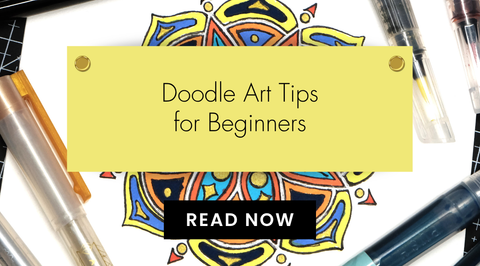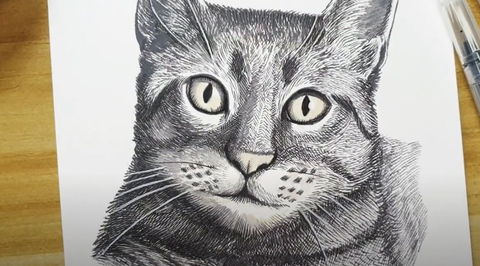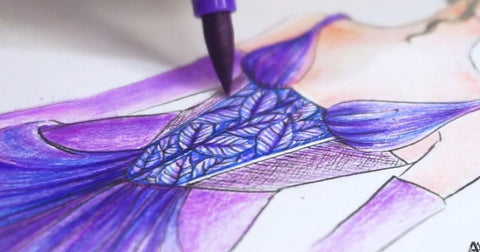The Benefits of Using Watercolors for Plein Air Painting
Last Updated: October 13, 2025
"The aim of art is to represent not the outward appearance of things, but their inward significance. "- Aristotle.
Are you looking for a new artistic challenge or a way to explore the great outdoors? Plein air painting, or painting outdoors, has become a popular way for artists to connect with nature and find inspiration for their work. What better medium to use for such a session than watercolors?

Artists' Watercolor 24-Pan Set
Not only are they portable and easy to use on location, but they also offer a unique set of benefits that other mediums may not. In this blog post, we'll explore the advantages of using watercolors for plein air painting and why you should consider trying it for your next alfresco art adventure.
What Is Plein-Air Painting?
Plein air, or En plein air painting, is a painting style where artists create their artwork outdoors, on location, rather than in a studio. The term "plein air" is a French expression that translates to "open air." The rules for plein air painting are: 1) you must be outside, 2) your subject must be outside as well, and 3) you must finish the painting in one setting.
This type of painting allows you to capture the natural beauty and light of your surroundings in real-time and to immerse yourself in the sights, sounds, and atmosphere of your chosen location. Moreover, this painting style has been practiced for centuries by artists who also seek to capture the essence of a place and express their emotions and impressions through their artwork. Through the plays of highlights and shadows, this fast process mimics the way light moves outdoors, as if your brush was trying to preserve a moment in time.

Watercolor Paper Pad (9"x 12")
The method originates from the mid-19th century when the Impressionist painters in France, such as Claude Monet, Pierre-Auguste Renoir, and Camille Pissarro, began to paint outdoors to capture the fleeting effects of light and atmosphere. Before this, most artists worked exclusively in their studios, using sketches and studies made outdoors as reference material for their finished works. Isn't it poetic to think that plein-air painting came from an act of rebellion against traditional standards?

The Impressionists believed that painting directly from nature was essential for capturing the true essence of a scene, and they embraced the challenges and benefits of working en plein air. Since then, plein air painting has become a widespread artistic practice and has been adopted by artists worldwide across different styles and movements. So if you are an artist who wants to connect with nature and find inspiration in the natural world, then this style is perfect for you!
Why Are Watercolors Perfect for Plein Air Painting?
Watercolors are perfect for plein air painting for three main reasons:
- Portability: Watercolor paints are easy to carry around since they come in small tubes, bottles, or pans and can be used with just a few brushes and a palette. This makes them ideal for painting outdoors, where you may need to hike to your painting location or move around to find the perfect spot.
- Quick Drying Time: Watercolors can dry quickly, which means you can work faster and make adjustments to your painting without waiting for the paint to dry. This is particularly important when painting outdoors since the lighting and other conditions can change quickly. You just have to control the amount of your water to ensure faster drying time.
- Versatility: Watercolors can be used to create a wide range of effects, from transparent washes to bold, opaque colors. They are also great for capturing the natural beauty of landscapes, as they can be used to create delicate, subtle effects like the texture of leaves or the play of light on water through glazing techniques.
- Creative Freedom: They allow you to capture the beauty of nature quickly and easily while also providing a range of creative possibilities. Plus, they are a more forgiving medium, so even if you make a mistake in haste, you can easily fix it by playing with more or less water and pigment.

Monochrome Shading Pencils
Tips on Watercoloring in Plein Air Style
When you're ready to learn how to make your first watercolor painting in plein air, here are a few tips to help you get the best experience and result:
Be Prepared
It's essential to come prepared with all the necessary materials and equipment you'll need for your painting session. This includes paints, brushes, canvases, easels, and any other tools that you may require. Also, make sure to dress appropriately for the weather and bring sunscreen, an umbrella, bug spray, and water.
Here are some of the basic supplies you’ll need for plein air painting:
- An easel meant specifically for plein air painting
- Your watercolor paints, palettes, brushes, painter’s tape, and other tools
- A lightweight canvas
- An umbrella
- Some water and snacks
- Sunscreen
- Drying box to put your paint in after
- Tins and containers to clean your brushes in
- Rag or small towel
- Trash bag - don’t litter!
You can make a palette in advance, so you don’t have to worry about constantly squeezing paint out of tubes in between layers. When you can only bring a limited set of colors, it’s best to stick with primary colors.

Respect the Environment
When painting outdoors, respecting the natural environment around you is essential. Don't disturb any plants or wildlife, and make sure to clean up any trash or debris you create.
Follow Local Regulations: Make sure you're aware of any local regulations or restrictions that may apply to plein air painting.
Some areas may require permits, while others may have specific rules about where and when you can paint. If you're traveling on a plane and taking your paints with you, only bring vegetable oil-based paints and other accepted solutions to your local airport.
Be Mindful of Lighting
The lighting outside can change rapidly, so it's important to be aware of the time of day and how it's affecting your subject. Consider how the light is casting shadows, creating highlights, and affecting the colors in your painting. You can paint the areas first where the light direction would quickly change or come back to finish your painting at the same time and spot.
Work Quickly
Because of the changing light and weather conditions, plein-air painting requires artists to work quickly and efficiently. Try to capture the essence of your subject as quickly as possible, and don't worry about creating a finished, polished work of art.
Once you have finished studying your scene and determining what angle of the location you want to paint, you can begin your quick and spontaneous process. You can start by making a rough sketch, putting perspective lines, and priming your canvas with imprimatura, or your base layer of color. Then, build your darks, lights, and middle values.

When the sun is setting or the other way around (if you’re painting a nightscape), and you still aren’t finished, don’t sweat! Take a picture of your setting so you can choose to finish your artwork at home or come back again the next day if possible and go back to the precise location.
Have Fun
Finally, remember that plein air painting is meant to be a fun and rewarding experience. Don't put too much pressure on yourself to create a masterpiece, and enjoy the process of creating art in nature! If you want to connect with other artists who actively dabble in plein air painting, there is an annual plein air painting convention occurring in Colorado, and this year’s plein air convention is set for May 2023, so remember to check it out!
Practice Plein Air Painting Like a Pro With These Ideas!
Now that you know the secret to the plein air painting process, why not try it for yourself? Plein-air painting is one of the art methods that does not emphasize perfection. Rather, it is the act of preserving an essence, a memory, a place, and a scene - and that is best achieved with the ever-flowing, nature-like effects of watercolors.

Through this unique style, you can experiment and gain new perspectives on the world around us that you may have never noticed before. So go out into nature, take a deep breath, and be driven by what you find! Remember to drop by the Creative Corner for more inspiration. As always, keep on creating!






